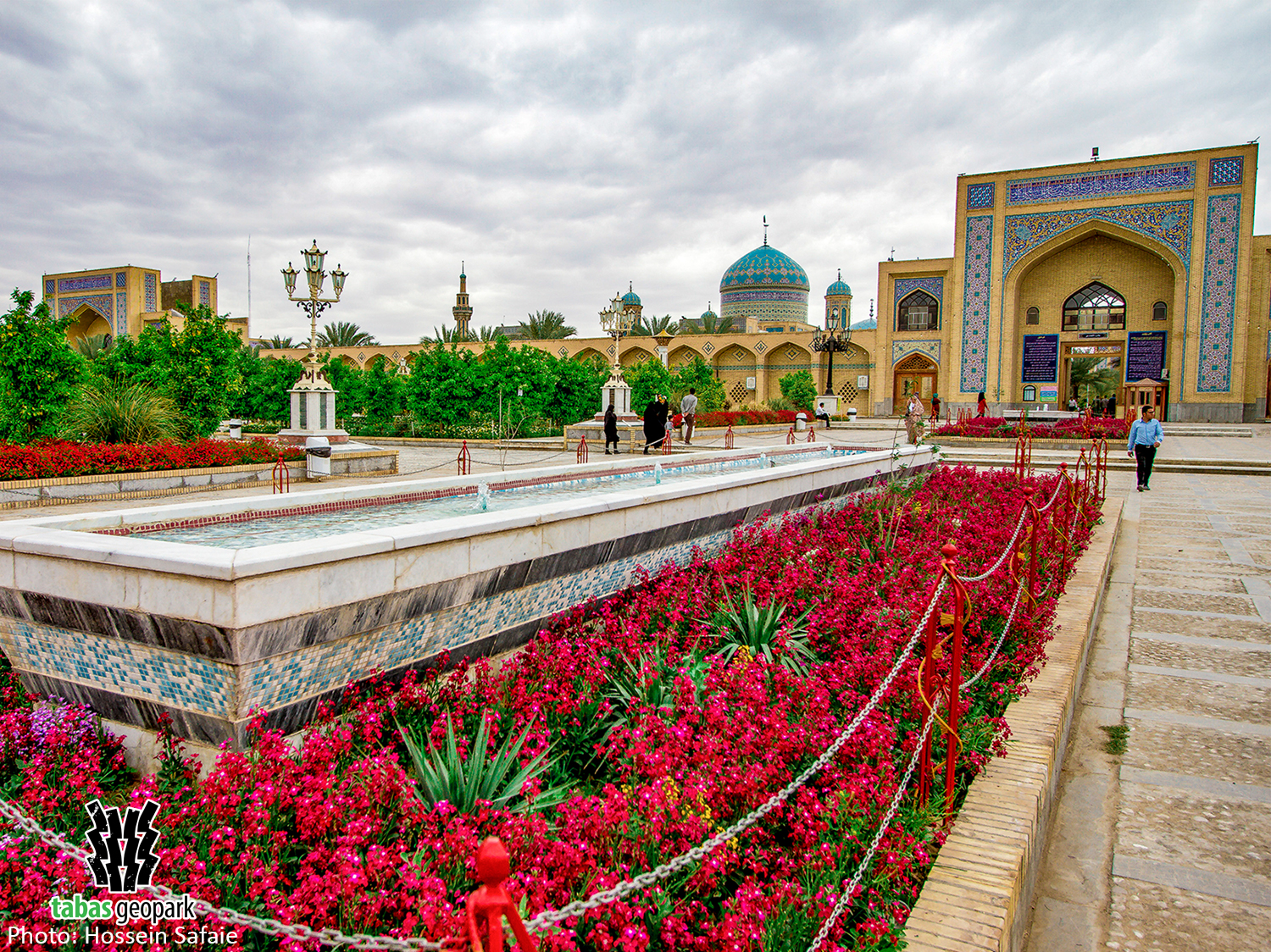The holy shrine geosite is one of the most important cultural – historical centers of Tabas Geopark. According to some historical documents, the original building of this complex belongs to the fifth century Ah, which houses the shrine of Hossein Ibn Musa-Al-Kazem, one of the last sons of the seventh Shiite Imam and brother of Imam Reza. Its construction was registered in the list of national monuments of Iran in 1939 with the number 337. Based on the analysis of the copy of the letter attributed to Imam Reza, his birthdate has been in the late second century around 178 Ah. The mentioned letter is a text written by Imam Reza in the honor of his brother to the ruler of Tabas (Amer Ibn Zarwamehr) to inform him of the arrival of Hossein Ibn Musa-Al-Kazem and ask the ruler to protect him against any harm.
The main building of the holy shrine was completely destroyed by the earthquake of September 16, 1978 in Tabas, but was later rebuilt by Astan Quds Razavi. The beautiful and magnificent architecture of the turquoise dome and its minarets from far away attract the attention of every viewer and has been welcomed by Muslims and even other religions from the past to the present. Its vast and very beautiful green space with a variety of trees and plants, especially palms and oranges along with its magnificent architecture have made it one of the most magnificent and extensive mansions, gardens, and surrounding space among the shrines of Iran, providing a safe accommodation for travelers who come to eastern Iran from different parts of the country. The most prominent decorative element in the Islamic architecture of this geosite is the tiling with style and architecture based on Islamic motifs and Quranic verses. Accordingly, it is the only shrine where all the names of God mentioned in the prayer of Jawshan Kabeer are engraved on the interior. Simple mirror work, mirror work in the form of painting, plastering on the mirror, combination of plaster and mirror work, calligraphy, and Muqarnas are the 6 types of mirror work used in this shrine, most of which are primarily geometric, Islamic, and Arabesque. Professor Martini, President of the UNESCO Global Geoparks High Council and Secretary General of the Global Geoparks Network, visited the geosite in late 2017, describing it as the heart of the Tabas Geopark.
– The scientific resources are available in the management of Tabas Geopark.
The use of this article is unrestricted by mentioning the source.

